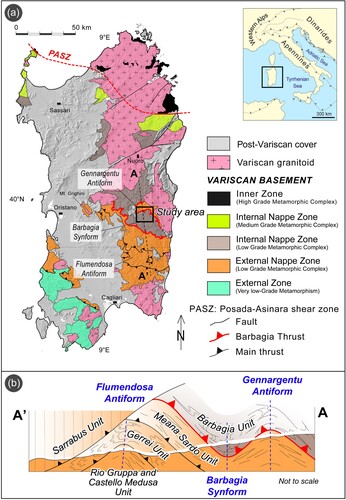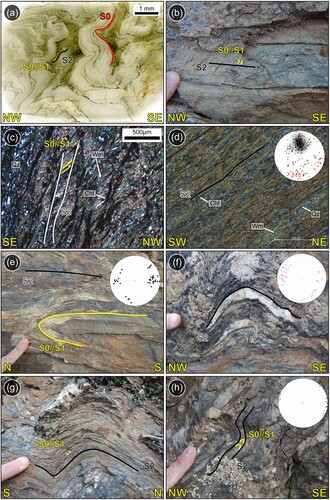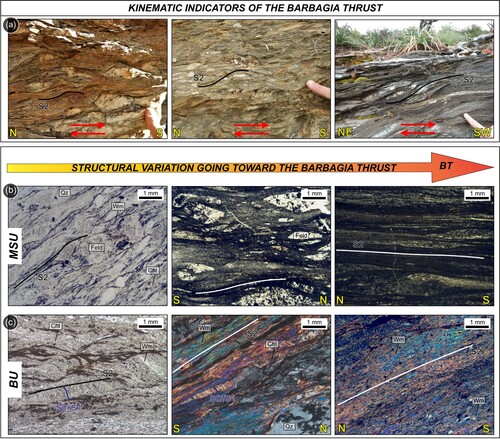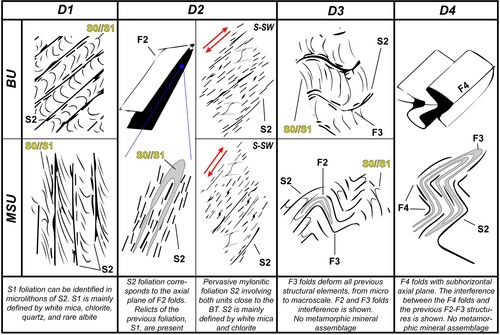Figures & data
Figure 1. (a) Tectonic sketch map of the Sardinia Island (modified after CitationCarosi et al., Citation2020; CitationMontomoli et al., Citation2018). (b) Schematic geological cross-section (A-A’) along the Nappe Zone (modified after CitationCarmignani et al., Citation1994; CitationConti et al., Citation1999, Citation2001).

Figure 2. Outcrop and microscale view of the main structural features. The structural equal-areal projections (lower hemisphere) of the S2 poles and L2 (d), A2 (e), A3 (f) and A4 (h) axes are shown. (a) Microscopic evidence of S2 gradational crenulation cleavage. S0 bedding and S1 foliation, parallel to S0, are also present. (b, c) S2 spaced foliation at both meso- and microscale (XPL: crossed-polarized light). In the thin section, S1 is marked by Wm + Chl. (d) Fine continuous S2 foliation is defined by Wm + Chl (XPL). (e) F2 fold, deforming the S0//S1 foliation in metasedimentary rocks belonging to the BU. (f,g) F3 folds, deforming the S2 foliation in metasedimentary rocks belonging to the MSU. No clear S3 axial-plane foliation in the F3 hinge zone is recognizable. (h) Late open folds (F4) with sub-horizontal axes and axial planes deforming S2 spaced foliation.

Figure 3. (a) Mesoscopic kinematic indicators of mylonites belonging to the Barbagia Thrust indicating a top-to-the S-SW sense of shear. (b,c) Structural variation going toward the Barbagia Thrust in both units. (b) variation from mylonites (on the left) to ultramylonites (on the right) in metavolcanic rocks belonging to the MSU. (c) Progressive variation of the foliation from spaced cleavage to a continuous cleavage moving toward the BT in metasedimentary rocks.

Figure 4. Synoptic reconstruction of the field and microstructural investigations of the deformation history of the BU and MSU.

Figure 5. Sketch of the structural evolution derived from the obtained data. (a) Structural features of the pre-, sin- and post-nappe stacking deformation under compressive conditions (D1, D2, D3). (b) Simplified and not to scale structural features of the investigated sector. Far from the mylonitic zone, pre-D2 structures are well-recognizable. The prominence of mylonite and, only in MSU, ultramylonite, characterizes the high-strain zone of the BT. The presence of S-SW dipping of the axial plane of F2 folds due to the D3 folding event has been highlighted.

TJOM_2093660_Supplemental materials
Download PDF (93.2 MB)Data Availability Statement
The authors confirm that the data supporting the findings of this study are freely available within the article and its supplementary materials.
